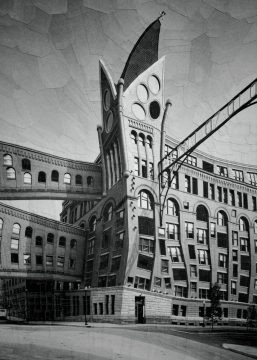Kate Wagner in The Baffler:
 WHEN I WAS an eleven-year-old child struggling with nascent mental illness, I received some perhaps ill-considered advice from one of many therapists: “Knowledge is power.” The idea was that by learning more about the things I feared, I would become less scared about them. In some ways, this worked. Researching the murder rate for our small town (zero murders) and the statistics of prepubescent heart attacks (extraordinarily rare) quelled some of my more ungrounded fears. This prescription for knowledge, however, was contraindicated by an existing condition of mine: morbid fascination. Why someone with clinical anxiety would spend a great deal of their time reading about the abject man-made horrors of the world—from industrial accidents to engineering catastrophes, from transportation accidents to public health crises—is a question I have asked myself for years. While perhaps less popular than horror movies and true-crime podcasts, the spectacle of catastrophe is nonetheless fascinating to the millions of people who spend their evenings binging Seconds from Disaster or Chernobyl.
WHEN I WAS an eleven-year-old child struggling with nascent mental illness, I received some perhaps ill-considered advice from one of many therapists: “Knowledge is power.” The idea was that by learning more about the things I feared, I would become less scared about them. In some ways, this worked. Researching the murder rate for our small town (zero murders) and the statistics of prepubescent heart attacks (extraordinarily rare) quelled some of my more ungrounded fears. This prescription for knowledge, however, was contraindicated by an existing condition of mine: morbid fascination. Why someone with clinical anxiety would spend a great deal of their time reading about the abject man-made horrors of the world—from industrial accidents to engineering catastrophes, from transportation accidents to public health crises—is a question I have asked myself for years. While perhaps less popular than horror movies and true-crime podcasts, the spectacle of catastrophe is nonetheless fascinating to the millions of people who spend their evenings binging Seconds from Disaster or Chernobyl.
A special subset of disaster porn is what we might call infrastructural tragedy: bridge collapses, oil spills, toxic waste dumps, nuclear meltdowns, industrial accidents of all stripes, and, on a slower timescale, the left-behind, dystopian landscapes of post-industrial decay and blight. From William Blake’s “dark Satanic Mills” to Koyaanisqatsi, from the photography of Margaret Bourke-White, Richard Misrach, and David T. Hanson to Walter Gropius and Le Corbusier’s fascination with grain elevators, the impact on the arts made by the horrors of production and the landscapes they’ve left behind—arguably necessary evils that make our contemporary way of life possible—spans disciplines and centuries.
More here.
